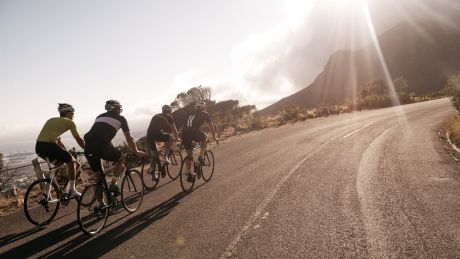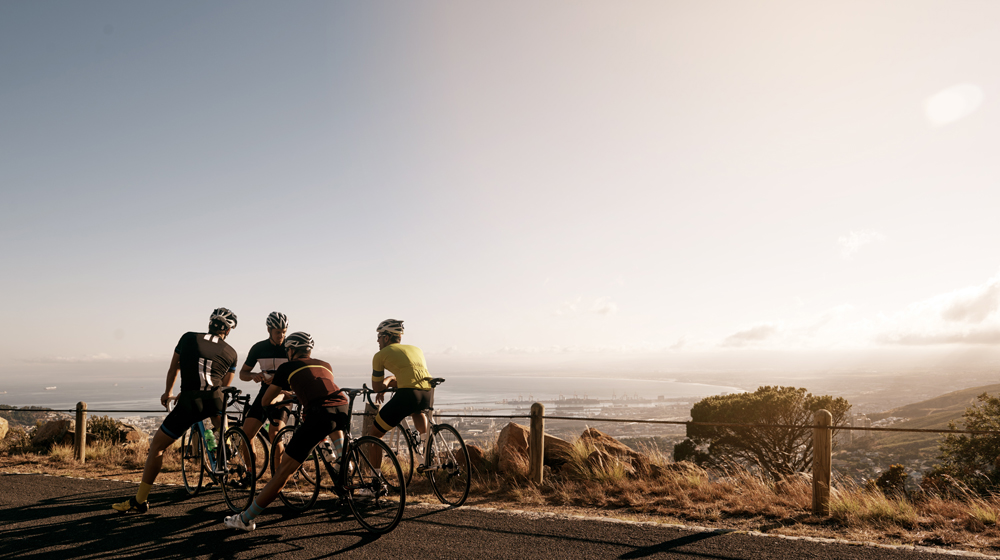How to Cycle in a Group
If you want to enter a cycling event you’ll need to practise riding in a group. Bikes Etc’s Nick Soldinger explains the rules

If successful group riding could be summed up in a single word it would be “respect”. Respect for your fellow riders should result in you being respected right back. In other words, treat others as you’d expect to be treated. But why ride in a group at all? Well, apart from being a blast, it has real benefits, too.
By allowing the pack to work in the leaders’ slipstream a good group working together can help riders save up to 20% of their energy – this is particularly true in headwinds. It also makes cycling big distances less lonely as you pull together to overcome the challenge.
If you’re entering a sportive for the first time but have never ridden among large numbers of other cyclists, it’s a good idea to approach your local club about joining them for some practice rides. Most clubs allow a few taster rides without requiring you to join, and nearly all offer graded routes similar to skiing (black, red, blue and so on) with different distances and average speeds. You may even find you enjoy riding with them so much you want to become a permanent member.
RECOMMENDED: 10 Tips for Your First Cycling Sportive
The first time you go out in a group, ride at the back and study how the more experienced riders do it. Ask them for advice, too – most will be happy to help and, even if you’re a stronger cyclist than them, they may have some gem of wisdom that’ll make you even better.
Keep close, but be safe
A good tip when you’re starting out is to focus on the front wheel hub of the bike directly ahead of you – this will help you get used to keeping close but staying safe. Use your peripheral vision to gauge distances. As your confidence grows, look up and start concentrating on the whole pack and the road in general. Awareness is as important as communication when it comes to getting group riding right.
When you feel more comfortable, start moving up into the pack. Avoid making sudden movements to your left or right. Always check that you’ve got the space to move before doing so and always indicate to others in your group what your intentions are. Remember: communicate at all times, and don’t be embarrassed to do so.
Get the Coach Newsletter
Sign up for workout ideas, training advice, reviews of the latest gear and more.
Be alert, stay aware
The more tightly packed and organised the group, the better the efficiency of the ride and the greater the safety of the riders on open roads. So be aware of those around you, too – not just so that you don’t cause a problem for them, but so that they don’t cause a problem for you. If you get the impression someone riding near you is about to make a sudden lurch to one side just give them a quick (but polite!) vocal reminder that you’re there.

Don’t stop communicating
When tackling a climb, most cyclists will ride out of the saddle. This tends to push a rider’s bike backwards slightly – a potential hazard for the one behind, focusing on his or her back wheel. So if you’re intending to get out of the saddle, announce it loudly – your fellow riders will appreciate it.
For obvious reasons, use your brakes sparingly. Always ride with your hands over the hoods or the drops so you can just tap them when you need to. Avoid snatching at them. Sudden braking is fraught with danger – stop suddenly in a bunch and chances are that you’ll be bothering some already pretty overstretched NHS staff, with your fellow riders taking up the adjacent hospital beds.
Remember that riders in the middle of a bunch are far less visible than those at the front. So if you find yourself riding at the front – and good manners dictate that you should take your turn there – and you see an obstacle or change of direction, you have an obligation to give those behind you a warning. This can be anything from anything from potholes or glass on the road to merely indicating that the group needs to turn left or right. The best thing to do is both vocalise it and use an easily understood hand signal.
Always be a gentleman
When you’re doing your stint up the front – fail to and you’ll be accused of “wheel sucking”, a heinous crime – it’s not your job to push the pace but to provide the spear point for the group’s slipstream. For that reason you also want to avoid committing the equally dastardly crime of half wheeling. This means being one of the two riders leading the group and nudging your front wheel slightly ahead of the other’s. When the other leader inevitably draws level, this will increase the tempo of the entire pack unnecessarily. It’ll frustrate the people you’re riding with and ensure they avoid riding with you in future. Don’t do it.
While the necessary evil of spitting or clearing your airways is acceptable while riding in a group, doing it while in front of other riders is not. Blasting out a snot rocket that flies backwards into someone’s face is about as gross as it gets. If you need to de-gunk your hooter ensure it’s a victimless crime by slipping to the back of the bunch and doing it there, or steering wide of the group – making sure it’s safe to do so first – before de-snotting.
Cycling long distances is tough and it can feel lonely at times, so give encouragement to those around you if you see them suffering. Sharing food, or kit should they have a mechanical problem, won’t just make you a better cyclist but a better person. Remember, treat others as you’d want to be treated yourself – because next time it could be you in need of a helpful gesture.
Coach is a health and fitness title. This byline is used for posting sponsored content, book extracts and the like. It is also used as a placeholder for articles published a long time ago when the original author is unclear. You can find out more about this publication and find the contact details of the editorial team on the About Us page.

